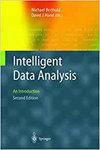MeFiNet: Modeling multi-semantic convolution-based feature interactions for CTR prediction
IF 0.8
4区 计算机科学
Q4 COMPUTER SCIENCE, ARTIFICIAL INTELLIGENCE
引用次数: 0
Abstract
Extracting more information from feature interactions is essential to improve click-through rate (CTR) prediction accuracy. Although deep learning technology can help capture high-order feature interactions, the combination of features lacks interpretability. In this paper, we propose a multi-semantic feature interaction learning network (MeFiNet), which utilizes convolution operations to map feature interactions to multi-semantic spaces to improve their expressive ability and uses an improved Squeeze & Excitation method based on SENet to learn the importance of these interactions in different semantic spaces. The Squeeze operation helps to obtain the global importance distribution of semantic spaces, and the Excitation operation helps to dynamically re-assign the weights of semantic features so that both semantic diversity and feature diversity are considered in the model. The generated multi-semantic feature interactions are concatenated with the original feature embeddings and input into a deep learning network. Experiments on three public datasets demonstrate the effectiveness of the proposed model. Compared with state-of-the-art methods, the model achieves excellent performance (+0.18% in AUC and -0.34% in LogLoss VS DeepFM; +0.19% in AUC and -0.33% in LogLoss VS FiBiNet).MeFiNet:为点击率预测建立基于卷积的多语义特征交互模型
从特征交互中提取更多信息对于提高点击率(CTR)预测准确性至关重要。虽然深度学习技术有助于捕捉高阶特征交互,但特征组合缺乏可解释性。在本文中,我们提出了一种多语义特征交互学习网络(MeFiNet),它利用卷积操作将特征交互映射到多语义空间以提高其表达能力,并使用基于 SENet 的改进型挤压与激励方法来学习这些交互在不同语义空间中的重要性。挤压操作有助于获得语义空间的全局重要性分布,激励操作有助于动态地重新分配语义特征的权重,从而在模型中同时考虑语义多样性和特征多样性。生成的多语义特征交互与原始特征嵌入连接在一起,并输入深度学习网络。在三个公共数据集上的实验证明了所提模型的有效性。与最先进的方法相比,该模型取得了优异的性能(与 DeepFM 相比,AUC 为 +0.18%,LogLoss 为 -0.34%;与 FiBiNet 相比,AUC 为 +0.19%,LogLoss 为 -0.33%)。
本文章由计算机程序翻译,如有差异,请以英文原文为准。
求助全文
约1分钟内获得全文
求助全文
来源期刊

Intelligent Data Analysis
工程技术-计算机:人工智能
CiteScore
2.20
自引率
5.90%
发文量
85
审稿时长
3.3 months
期刊介绍:
Intelligent Data Analysis provides a forum for the examination of issues related to the research and applications of Artificial Intelligence techniques in data analysis across a variety of disciplines. These techniques include (but are not limited to): all areas of data visualization, data pre-processing (fusion, editing, transformation, filtering, sampling), data engineering, database mining techniques, tools and applications, use of domain knowledge in data analysis, big data applications, evolutionary algorithms, machine learning, neural nets, fuzzy logic, statistical pattern recognition, knowledge filtering, and post-processing. In particular, papers are preferred that discuss development of new AI related data analysis architectures, methodologies, and techniques and their applications to various domains.
 求助内容:
求助内容: 应助结果提醒方式:
应助结果提醒方式:


